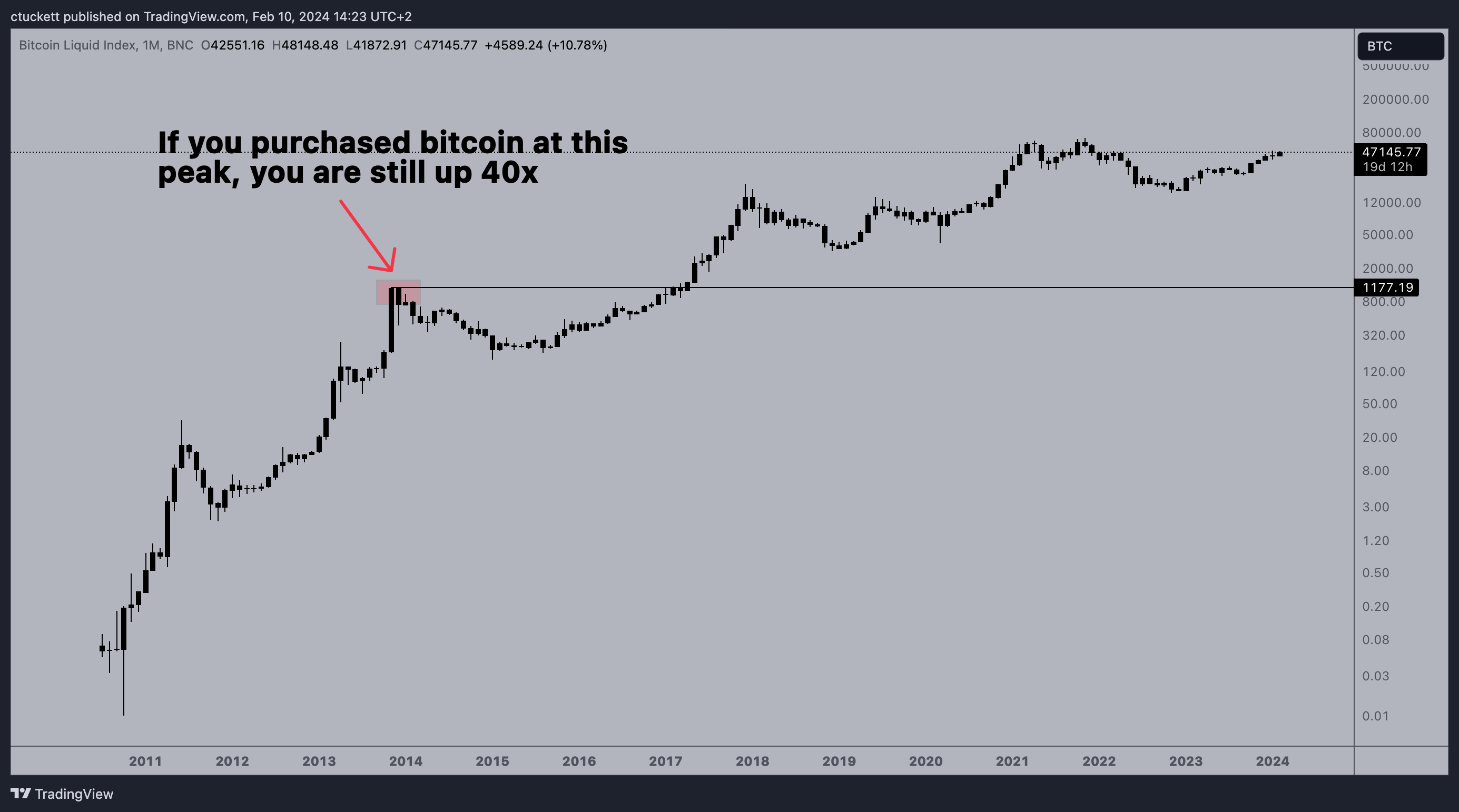Bitcoin's Four Year Cycle explained

Historically bitcoin has followed a repetitive cycle that lasts about 4 years. Let's dive into what causes this cycle, the cycles we have seen in the past, and what we can expect in the coming years.
Block Rewards
Every 10 minutes, on average, a new block of transactions is added to the bitcoin blockchain. The miner who collects, verifies, and adds a block of transactions to the network is rewarded with newly minted bitcoin. This newly minted bitcoin is called the "block subsidy."
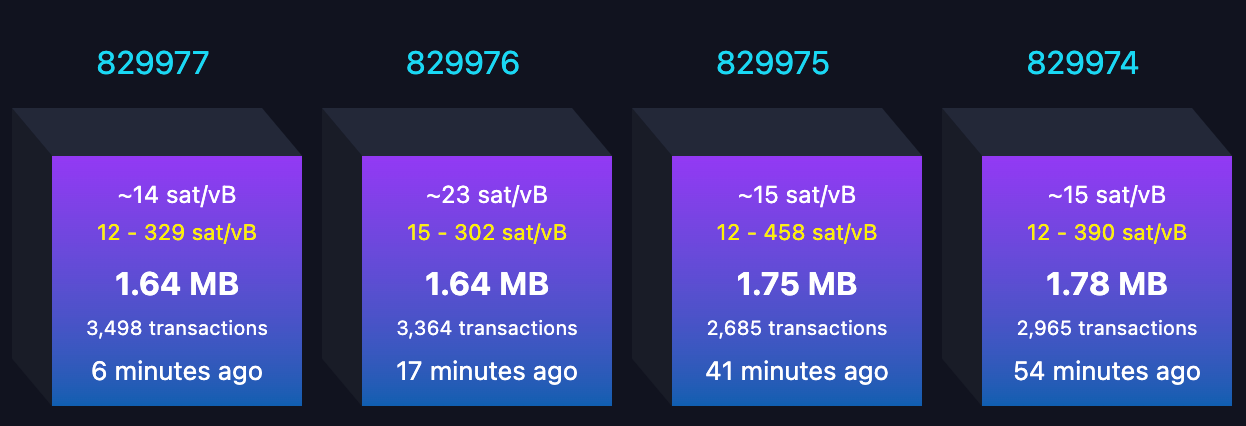
Halvings
The block subsidy started at 50 bitcoin for every bitcoin block that was mined. Every 210 000 blocks, or approximately every 4 years, the amount of freshly issued bitcoin in this block subsidy is cut in half.
Bitcoin's rate of issuance is halved. Hence, the halving.
This table shows when the previous halvings took place, and the block subsidy during these periods. The next halving is projected to be in April 2024.
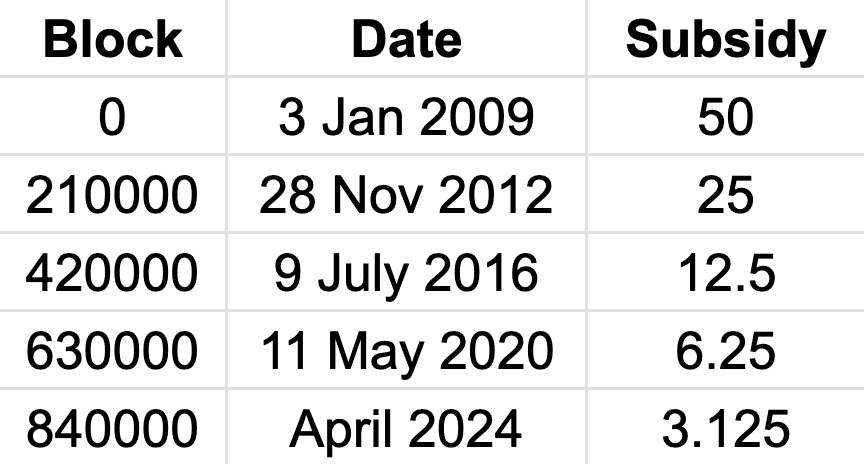
Epochs
After each halving, we enter a new "Epoch." The first epoch began when bitcoins first block was mined and the block subsidy was 50.
After block 210 000, the first halving, we entered Epoch 2.
After block 420 000, we enter Epoch 3, and so on...
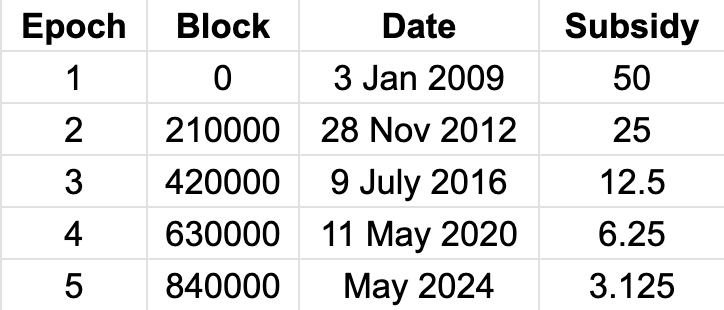
The epoch we are in is most importantly defined by the current block subsidy. Currently, the block subsidy is 6.25. Therefore we are in Epoch 4. (As of Feb 2024)
Halving impact
The people who receive these freshly minted bitcoin are bitcoin miners. Mining bitcoin requires expensive hardware, warehousing, cooling, maintenance, and the process itself is very energy intensive.
Mining bitcoin comes with massive operational costs, and miners must sell bitcoin to cover their costs.
Basic economics tells us that selling pressure pushes prices down, so miners push the price of bitcoin down by selling coins and flooding the market with more.
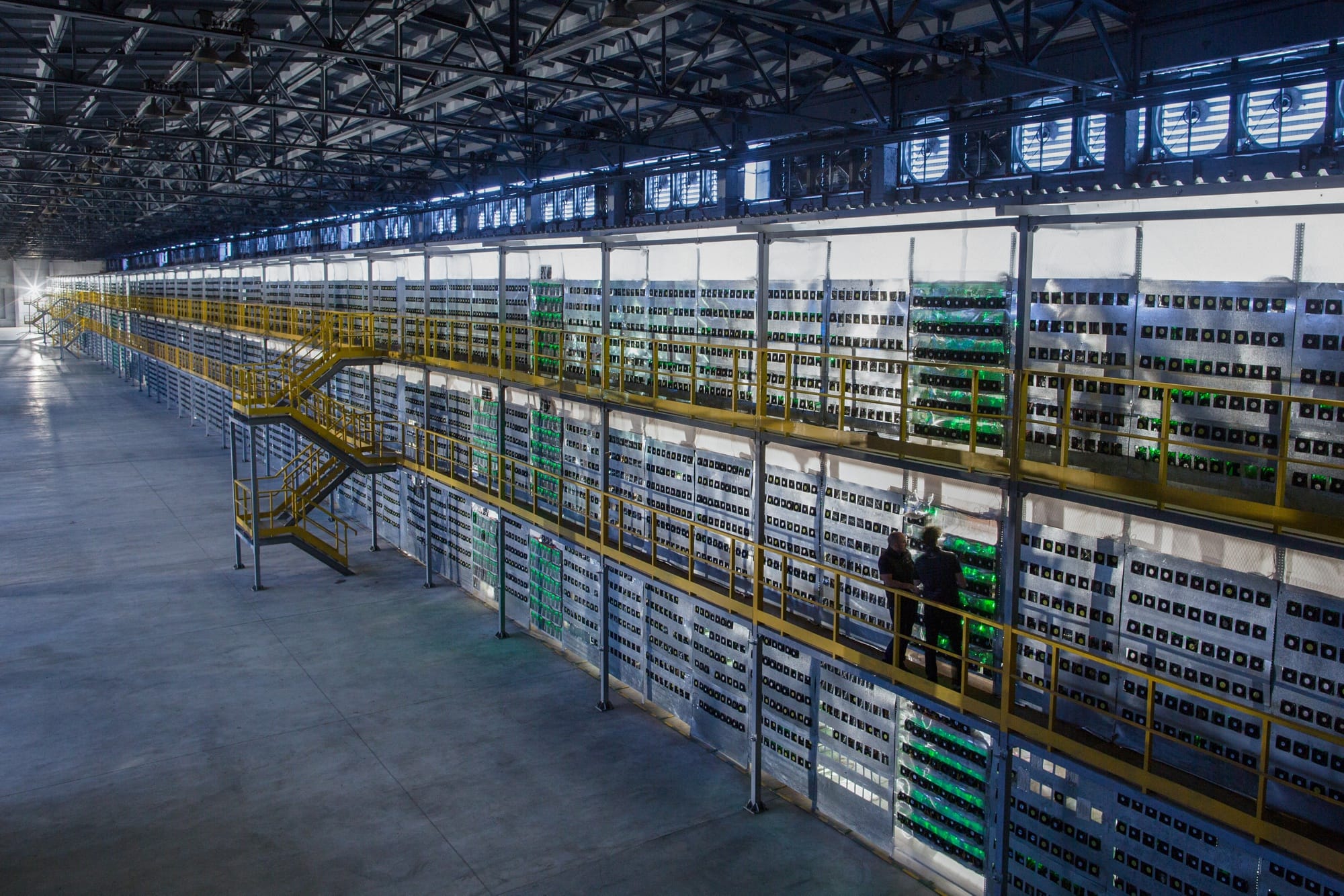
When bitcoin experiences a halving, miner rewards are cut in half and miners only have half the freshly minted bitcoin to sell and flood the market with.
The cycle overview
Bitcoin's 4 year cycle revolves around this halving event. Here is a break down:
Stage 1: Bitcoin tends to have a bull market for ≈ 1000 days, with the halving in the centre of this bull market.
Stage 2: Bitcoin hits it peak 1-2 years after the halving, and enters a bear market that typically lasts ≈ 1 year.
To simplify: 3 year bull market, 1 year bear market.
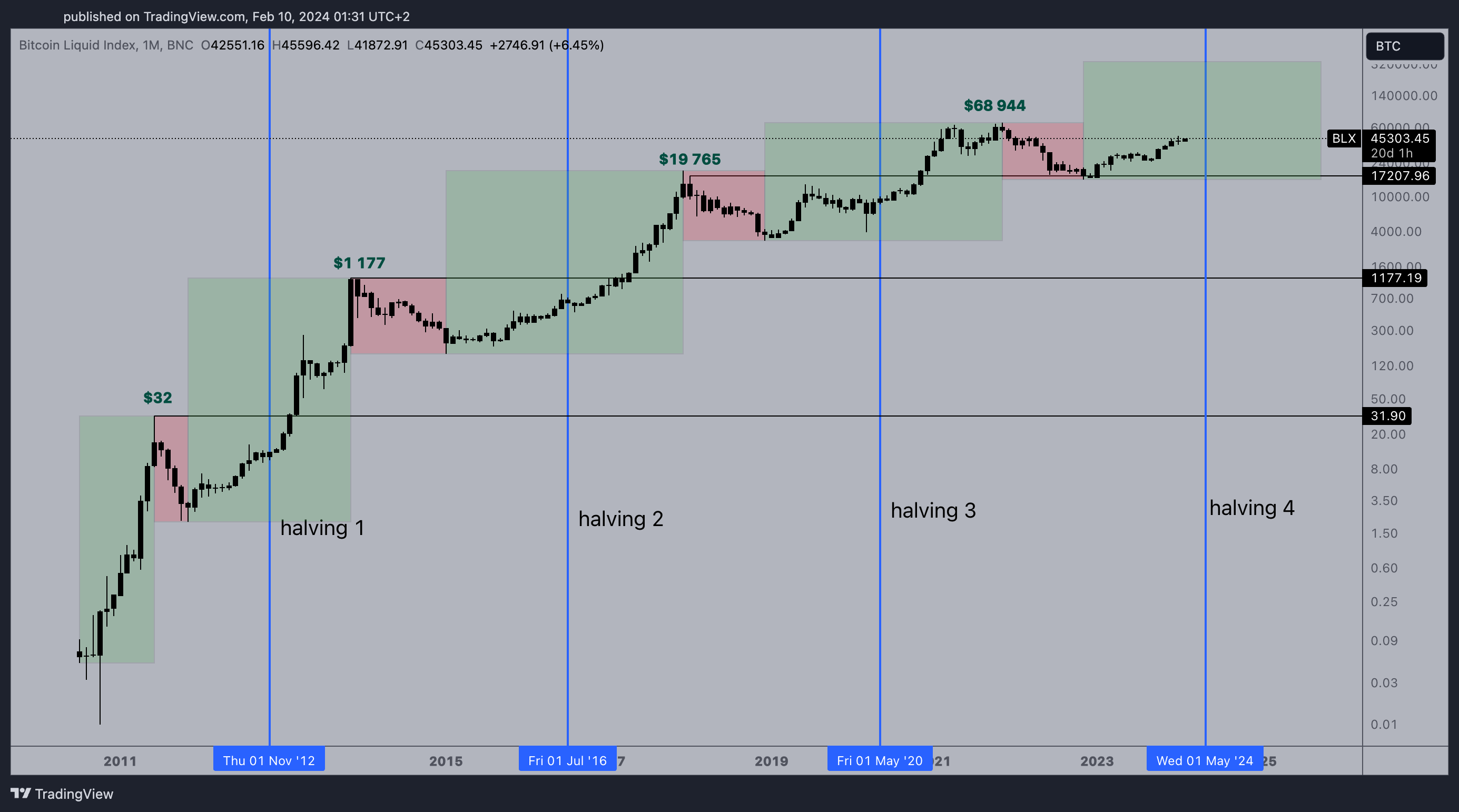
This is a chart showing the price of bitcoin since 2011. You can clearly see that bitcoin's price is historically bullish leading up to and after the halving event (marked with blue lines), and bearish in between the halving events.
Lets take a closer look at each epoch.
Epoch 1 - 2
*All dates are accurate to 1 week*
The first bitcoin block was mined on 3 Jan 2009. Bitcoin was worthless at this point and it took 1.5 years before a price was established by the market on Mt Gox. Bitcoin was very illiquid during epoch 1 and 2 but still created its first cycle, which we would see repeat time and time again.
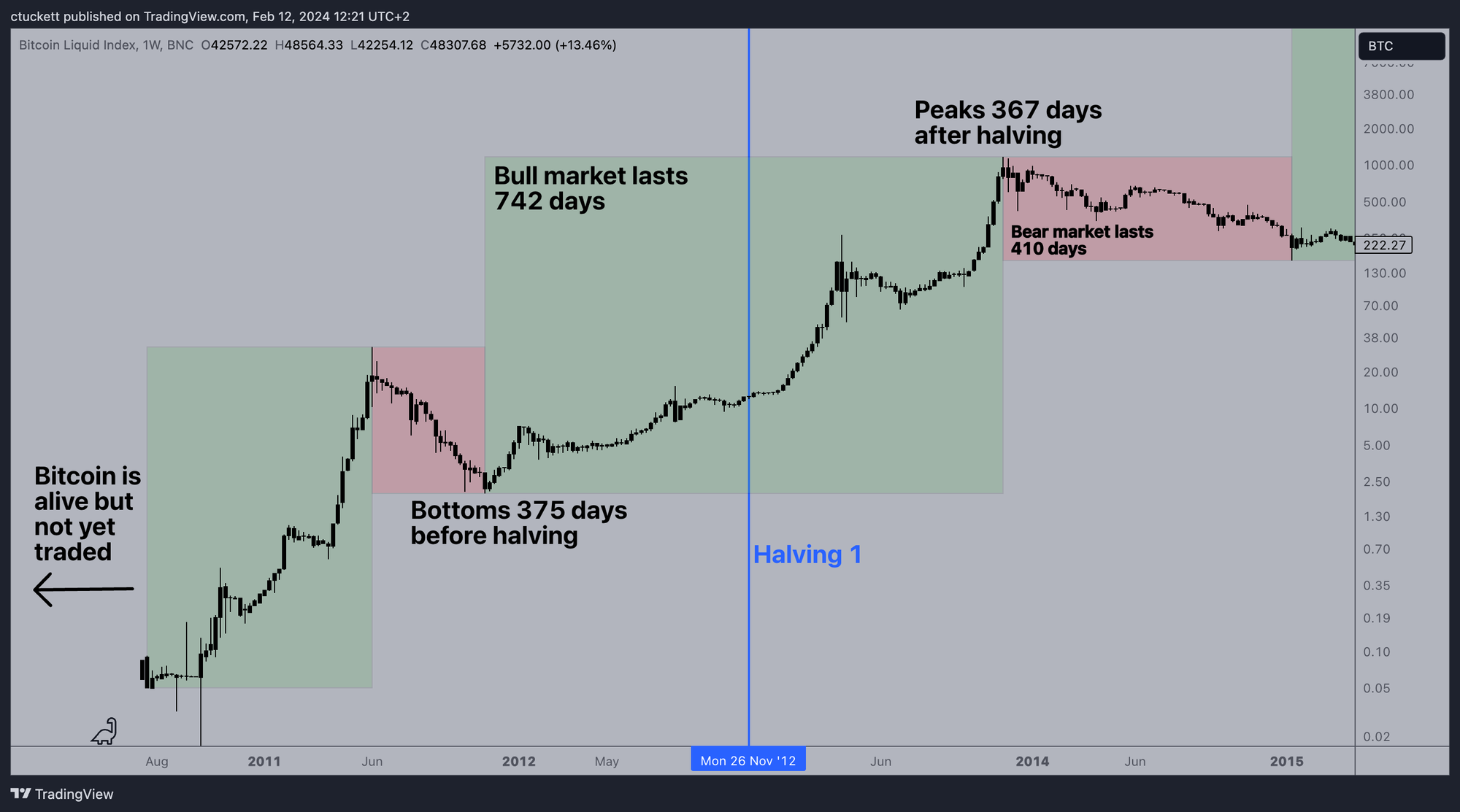
Key times
Bull market: 742 days.
Bear market: 410 days.
Epoch 2 - 3
In this epoch, bitcoin had gained some traction and was trading on a few exchanges. It again repeated the cycle we say in epoch 1/2, but the bull market lasted longer and the bear market shorter.
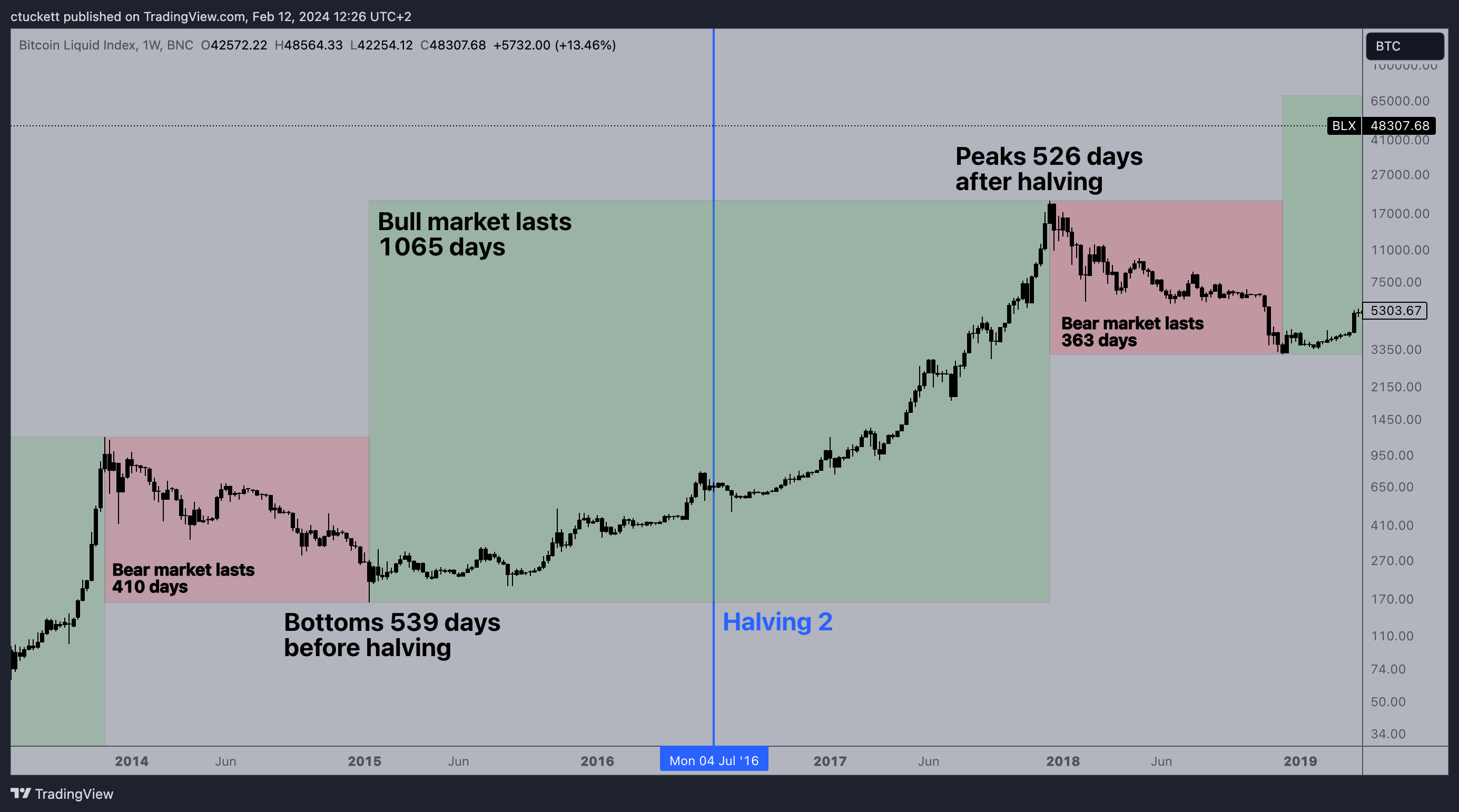
Key times
Bull market: 1065 days.
Bear market: 363 days.
Epoch 3 - 4
Bitcoin is now well known across the planet, and follows the cycle for the third time. The bull and bear market periods were very similar to the previous cycle.
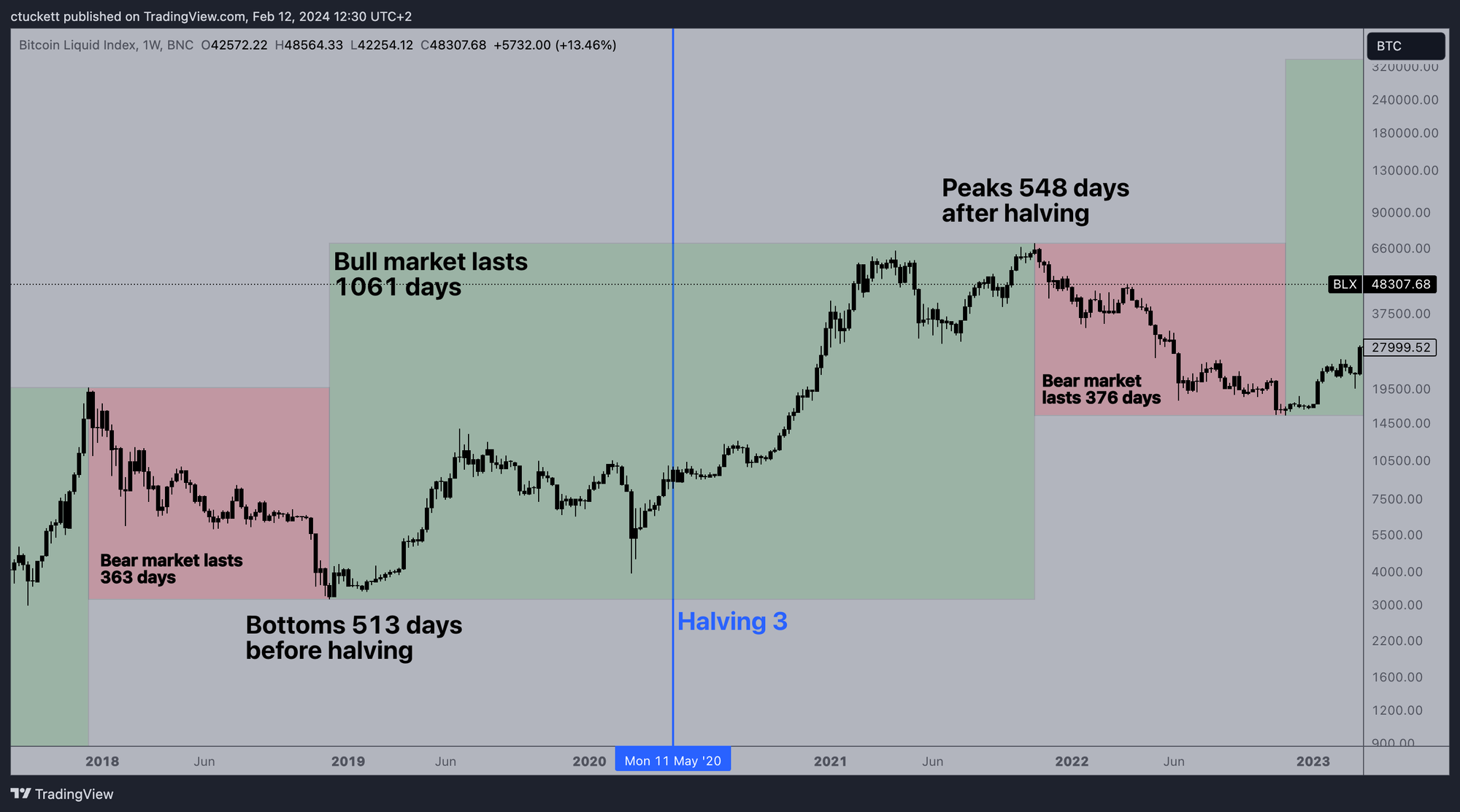
Key times
Bull market: 1061 days.
Bear market: 376 days.
Epoch 4 - 5
The next bitcoin halving is expected in April 2024 and we will then enter epoch 5. Bitcoin appears to have bottomed 515 days before the expected halving.
If history repeats itself, we can expect bitcoin to remain bullish until around October 2025. Of course, things can change. Only time will tell.
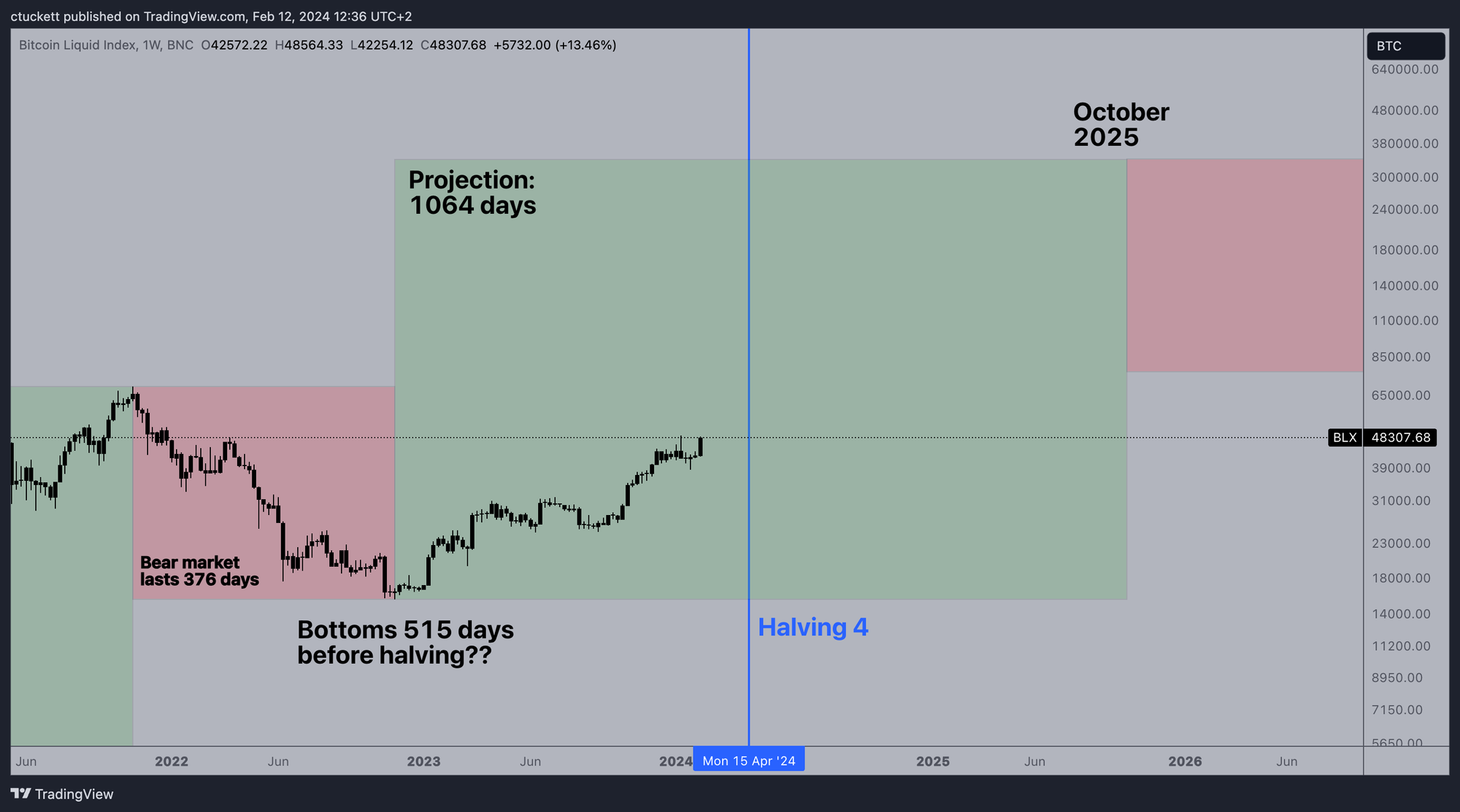
What to do with information
Although it is generally best to buy during the bearish cycle, you should just buy bitcoin anyway.
Turn your productivity, skills, and work, into hard money.
Do not try to time the market. Just buy bitcoin.
